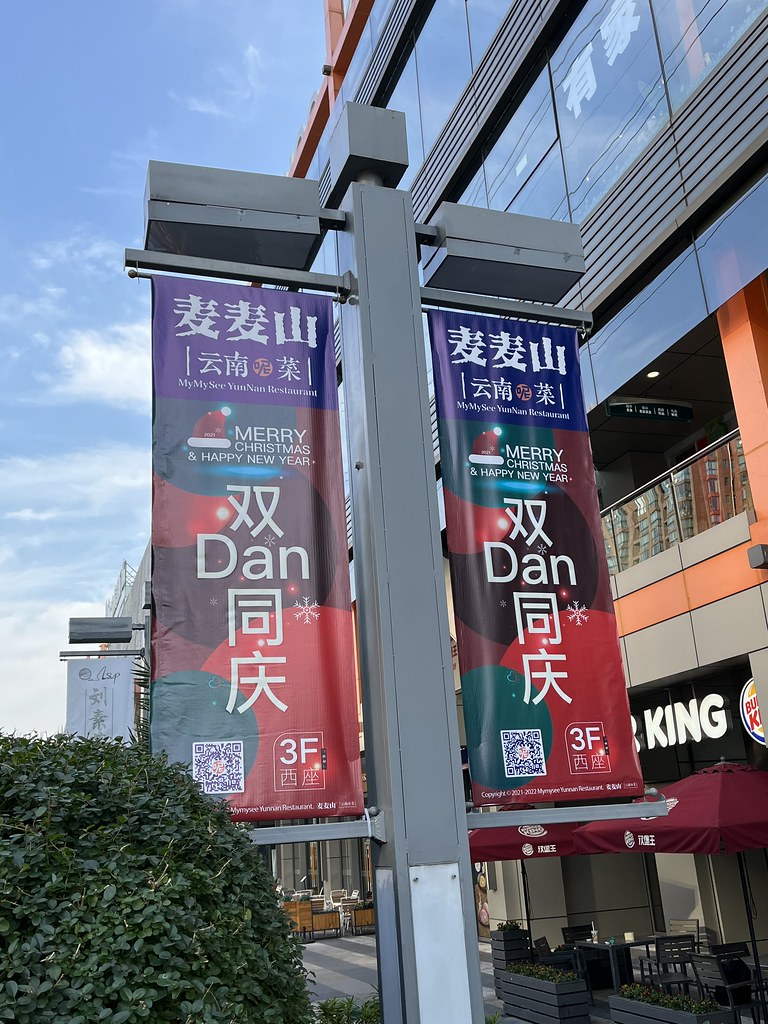The Two Dans of the Holiday Season
Check out this holiday ad I spotted here in Shanghai:

Who is Dan, and what does he have to do with the holidays?? No, it’s actually a reference to two winter holidays.
It reads: 双dan同庆 (shuāng dan tóng qìng)
Hanukkah is 光明节 (Guāngmíng Jié) in Chinese (we wrote a bit about this on ARC), and it’s now over this year. So it’s not about that.
Christmas is now over… that’s 圣诞节 (Shèngdàn Jié). So one “dan” is in 圣诞节 (Shèngdàn Jié). The other is in 元旦 (Yuándàn), the Chinese name for New Year’s Day (which, unlike Christmas, is a national holiday in China).
So “双dan同庆 (shuāng dan tóng qìng)” means “Double dan, celebrated together,” referring to Christmas and January 1st. Try pulling off that compact linguistic wordplay in English!
Here’s something weird, though: the ad above uses pinyin “dan” to represent the two different characters both read “dàn” in pinyin. This ad, however, makes no such effort:

(Don’t be fooled by the stylization of the characters… that’s a 旦 (dàn) character, not 日 (rì).)
So the single character 旦 (dàn) is used to represent both “dan” characters, even though 圣诞节 (Shèngdàn Jié) uses a different “dan.” I’m told this is fairly common, and it’s what you do when you don’t want to insert pinyin into your Chinese text. Maybe that aversion to pinyin in Chinese text is becoming less undesirable over time?
This second ad uses the word 乐享 (lèxiǎng) which is sort of an abbreviated way of saying 快乐享受 (kuàilè xiǎngshòu), or “happily enjoy.” The quotes are there not because a character has been swapped out, but because it’s also part of the Chinese name of FILA: 斐乐 (Fěilè). Not exactly a clever pun.
Happy holidays! Here comes 2022, ready or not…
